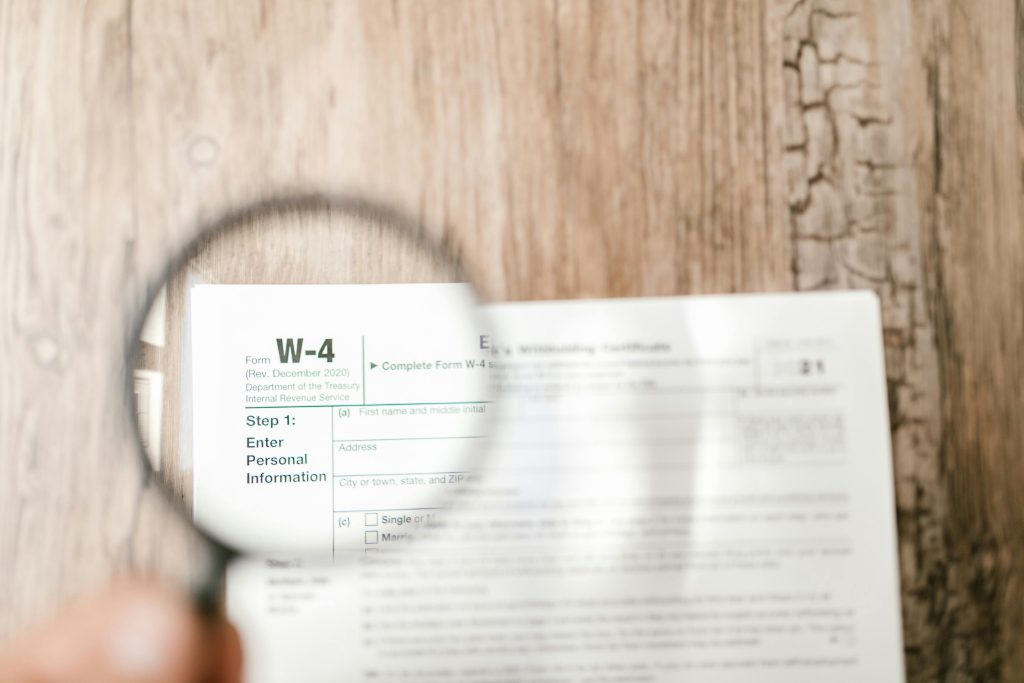Introduction
Whether in manufacturing, construction, healthcare, or regulatory compliance, inspections are critical for ensuring that processes, products, and facilities meet required standards. But conducting an inspection is only half the job—the real value comes from how you document inspection findings. Poor documentation can lead to miscommunication, compliance failures, or even legal consequences. On the other hand, clear, detailed, and structured reports enable better decision-making, corrective action, and accountability.
In this guide, we’ll explore the principles, methods, and best practices for documenting inspection findings effectively. You’ll learn why documentation matters, the tools professionals use, and step-by-step strategies for creating inspection records that stand up to scrutiny.
Why Documenting Inspection Findings Matters
1. Ensures Compliance
Most industries are regulated by strict standards (OSHA, ISO, FDA, etc.). Detailed inspection records prove that inspections were conducted properly and on schedule.
2. Creates Accountability
Well-documented findings assign responsibility and make it clear what actions are needed, by whom, and when.
3. Supports Continuous Improvement
By tracking recurring issues or noting trends, inspection records become a valuable source of insights for process optimization.
4. Provides Legal Protection
In the event of disputes or audits, thorough records act as evidence that standards were followed.
5. Facilitates Communication
Reports ensure all stakeholders—managers, operators, clients, regulators—are on the same page.
The Core Components of Inspection Documentation
Regardless of industry, inspection findings should cover the following elements:

- Basic Information
- Date, time, and location of inspection.
- Inspector’s name and credentials.
- Inspection type (routine, follow-up, compliance check, etc.).
- Scope and Objective
- What was inspected? (e.g., machinery, site, process, documentation).
- What standards or checklists were used?
- Observations
- Neutral, factual descriptions of what was seen, heard, or measured.
- Avoid opinions at this stage—stick to evidence.
- Findings / Results
- Specific issues identified (defects, non-compliance, risks).
- Positive compliance notes (where things were done correctly).
- Supporting Evidence
- Photographs, videos, measurements, sensor data, or test results.
- Assessment
- Severity of issues (critical, major, minor).
- Impact on safety, quality, or compliance.
- Recommendations / Corrective Actions
- What should be done to address each issue.
- Who is responsible and by when.
- Signatures / Approvals
- Inspector and responsible party sign-off.
- Optional witness or supervisor confirmation.
Methods for Documenting Inspection Findings
Different organizations adopt different approaches depending on complexity and regulation.
1. Paper-Based Checklists
- Traditional and still common in smaller operations.
- Simple but harder to store, search, or analyze.
2. Digital Forms and Mobile Apps
- Allow inspectors to enter findings directly on tablets or phones.
- Automatically time-stamp, geo-tag, and attach images.
- Integrate with cloud storage for easy access.
3. Audit Management Software
- Comprehensive platforms that standardize reporting.
- Include dashboards, analytics, and compliance tracking.
4. Hybrid Systems
- Paper checklists in the field, later digitized for record-keeping.
Pro Tip: Even if using paper, ensure findings are digitized quickly to maintain accessibility and avoid data loss.
Best Practices for Writing Inspection Findings
1. Be Clear and Objective
- Use factual language, not subjective opinions.
- Example: Instead of “The machine is in poor condition,” write “Machine X has oil leakage from valve Y and unusual vibration exceeding 3mm/s.”
2. Use Standardized Language
- Adopt consistent terms and categories.
- This reduces ambiguity and ensures findings can be compared across inspections.
3. Include Quantitative Data
- Numbers, measurements, and test results carry more weight than vague descriptions.
- Example: “Temperature exceeded 120°C (limit is 100°C).”
4. Support With Evidence
- Attach photos, diagrams, or sensor data whenever possible.
- Label evidence clearly so it matches the written findings.
5. Prioritize Issues
- Highlight critical issues first.
- Classify findings by severity to guide corrective action.
6. Avoid Jargon (Unless Standardized)
- Reports are often read by non-technical stakeholders.
- Write so the average manager or regulator can understand.
Step-by-Step Process for Documenting Inspection Findings
Let’s break the workflow into practical steps:
Step 1: Prepare the Template
- Define the checklist or form before the inspection.
- Ensure it aligns with regulatory requirements.
Step 2: Record Observations During Inspection
- Note findings immediately, not afterward.
- Use shorthand or digital dictation tools for speed.
Step 3: Add Supporting Evidence
- Take photos/videos as you go.
- Record measurement readings directly in the report.
Step 4: Draft the Inspection Report
- Transfer notes into structured format.
- Separate observations from assessments.
Step 5: Review for Accuracy and Clarity
- Double-check dates, names, and data.
- Remove unnecessary adjectives or vague terms.
Step 6: Share With Stakeholders
- Submit digitally where possible.
- Provide summaries for executives; full reports for technical staff.
Step 7: Archive for Future Reference
- Store in a searchable, secure system.
- Ensure version control for follow-up inspections.
Example: Poor vs. Good Documentation
Poor Example:
“Machine looks bad. Needs fixing.”
Good Example:
“Inspection on 12/07/2025 at 10:15 am. Machine #4, compressor unit. Found hydraulic leak from hose connection (approx. 50ml fluid on floor). Pressure reading: 60 psi (below 90 psi threshold). Corrective action: Replace hose within 48 hours.”
Notice how the second example is specific, measurable, and actionable.
Common Mistakes in Documenting Inspection Findings

- Being Too Vague
– “Area not safe” vs. “Loose cables across walkway creating trip hazard.” - Mixing Facts and Opinions
– Keep personal judgment separate from factual observation. - Omitting Evidence
– A written note without photos may not stand up in disputes. - Ignoring Positive Findings
– Only documenting negatives misses opportunities to highlight compliance strengths. - Lack of Consistency
– Different inspectors describing the same issue differently creates confusion.
Tools That Can Help
- iAuditor: Mobile app for checklists and reports.
- GoCanvas: Customizable inspection forms.
- Smartsheet: For collaborative inspections and workflow tracking.
- Tablets with cameras: Allow instant multimedia evidence capture.
Tip: Choose tools that fit your industry’s compliance needs (e.g., FDA 21 CFR Part 11 for pharmaceuticals).
1. Use Digital Transformation for Smarter Reporting
Paper checklists are increasingly being replaced by digital solutions. Digital inspection platforms allow inspectors to:
- Capture real-time data with mobile devices.
- Automatically attach GPS, time stamps, and inspector IDs.
- Sync records instantly to the cloud for centralized access.
- Reduce transcription errors and missing data.
Example: A construction inspector can walk a site with a tablet, check off items, snap photos, and submit a fully formatted report before leaving the premises.
2. Standardize Report Templates
Consistency is crucial across inspectors and inspections. Create standardized templates that include:
- Fixed fields for essential data (date, inspector, location).
- Drop-down menus for issue types and severity.
- Scoring systems (e.g., compliance percentage).
Benefit: Easier to compare findings across teams, locations, or time periods.
3. Incorporate Severity Ratings and Risk Scores
Not all findings are equal. Use structured rating systems such as:
- Critical / Major / Minor classifications.
- Numeric scales for severity, probability, and impact.
- Risk matrices that visually show urgency.
Example: A food safety inspection might rate mold presence as “Critical” due to direct consumer risk, while minor labeling errors may be “Low Severity.”
4. Enable Multimedia Documentation
Words alone can be misinterpreted. Strengthen findings with:
- High-resolution photos with annotations.
- Short video clips (e.g., demonstrating machine noise or vibration).
- Thermal images or sensor readings where relevant.
Pro Tip: Always label evidence with context—“Photo 2: Valve leak on pump #3.”
5. Create Action-Oriented Documentation
Reports should not only identify issues but also drive corrective action. Include:
- Clear recommendations tied to each finding.
- Assign responsibility to specific roles.
- Include deadlines for resolution.
- Set follow-up inspection dates if needed.
6. Implement Version Control and Audit Trails
Inspection records are often revisited. Advanced systems should:
- Track changes or updates to findings.
- Log who edited the report and when.
- Maintain archived versions for regulatory audits.
This ensures transparency and accountability.
7. Use Analytics to Detect Trends
When inspection findings are consistently documented, the data can be analyzed for trends.
- Identify recurring issues across facilities.
- Spot seasonal or equipment-specific patterns.
- Prioritize training or preventive maintenance.
Example: A manufacturer might discover that 70% of electrical inspection failures stem from one outdated equipment model.
Industry-Specific Considerations
Different sectors have unique documentation requirements. Let’s explore some examples.
Manufacturing & Industrial Inspections
- Must comply with ISO 9001, OSHA, or local safety standards.
- Documentation often includes machine performance data and calibration records.
- Photographic evidence of defects is critical for supplier disputes.
Tip: Use digital templates aligned with ISO audit checklists.
Construction & Site Safety Inspections
- Findings often tied to OSHA regulations or building codes.
- Reports must document worker safety practices, scaffolding, PPE compliance, and hazard conditions.
- Geo-tagging is useful to tie issues to specific site zones.
Example: “Fall protection harnesses missing on Level 3 scaffolding, northeast corner.”
Food & Hospitality Inspections
- Focus on hygiene, temperature logs, and contamination risks.
- Must comply with FDA or local health codes.
- Documentation should include temperature readings, storage practices, and photos of hygiene issues.
Healthcare Facility Inspections
- Inspections cover infection control, equipment maintenance, and medication storage.
- Documentation must be HIPAA-compliant, with no patient-identifiable data included.
- Findings may be reviewed by accreditation bodies like The Joint Commission.
Environmental Inspections
- Include emissions, waste disposal, and pollution prevention measures.
- Findings often compared to environmental permits or EPA standards.
- Satellite imagery and sensor data may supplement reports.
Aviation & Transportation Inspections
- Highly regulated by FAA, DOT, or ICAO standards.
- Reports must include checklists for mechanical systems, safety equipment, and compliance with operational procedures.
- Documentation must be precise and auditable due to safety-critical nature.
Real-World Examples of Effective Documentation
Example 1: Oil & Gas Industry
An offshore rig inspection found corroded pipelines. Documentation included:
- Photos with annotations.
- Thickness measurements showing metal loss.
- Risk score (critical).
- Recommendation: Immediate pipeline replacement.
Outcome: Quick management approval for emergency maintenance, avoiding a major leak.
Example 2: Food Safety Audit
Inspection of a restaurant noted:
- Freezer temperature at -5°C (within standard).
- Evidence of rodent droppings in storage area (critical issue).
- Photos provided.
- Action plan: Deep clean, pest control, and reinspection in 72 hours.
Outcome: Restaurant avoided license suspension by demonstrating corrective action.
Example 3: Construction Safety Inspection
Findings:
- Workers wearing helmets and harnesses (positive).
- Missing guardrails on scaffolding (major issue).
- Photos with geo-tags provided.
- Recommendation: Install guardrails before continuing work.
Outcome: Issue corrected within 24 hours, reducing accident risk.
Common Challenges and How to Overcome Them
- Incomplete Reports
– Solution: Standardize templates and train inspectors thoroughly. - Inconsistent Language
– Solution: Provide glossaries and standardized categories. - Delayed Reporting
– Solution: Use mobile apps for real-time submission. - Lack of Evidence
– Solution: Make photo/video capture mandatory. - Data Silos
– Solution: Integrate inspection software with ERP or compliance systems.
Future Trends in Inspection Documentation
1. AI-Powered Reporting
AI tools can analyze findings, auto-generate summaries, and even predict future risks.
2. Augmented Reality (AR) Inspections
Inspectors may soon use AR glasses that overlay checklists and auto-document findings.
3. IoT Integration
Machines and sensors automatically generate inspection data (e.g., vibration, emissions).
4. Blockchain Records
Immutable inspection logs stored on blockchain for ultimate accountability.
5. Predictive Analytics
Beyond documenting current findings, systems will forecast likely future issues.
Conclusion
Documenting inspection findings is more than a compliance requirement—it’s a cornerstone of safety, quality, and operational excellence. Done poorly, it can lead to misunderstandings, accidents, or regulatory penalties. Done well, it becomes a strategic asset that improves accountability, drives corrective action, and fuels continuous improvement.

The key is to:
- Stick to factual, structured reporting.
- Support findings with evidence.
- Standardize templates and language.
- Leverage digital tools for accuracy and accessibility.
- Adapt to industry-specific standards.
As inspections evolve with technology, organizations that adopt advanced documentation strategies will not only stay compliant but also gain a competitive edge in efficiency and trustworthiness.
FAQs About Documenting Inspection Findings
1. What’s the difference between observations and findings?
Observations are neutral notes of what was seen, while findings interpret whether they meet or fail to meet standards.
2. How detailed should inspection reports be?
Reports should be as detailed as necessary for corrective action—include data, evidence, and recommendations, but avoid unnecessary fluff.
3. Can photos replace written notes?
No. Photos support findings but should always be accompanied by descriptive text for clarity.
4. How long should inspection records be kept?
Depends on industry regulations. Some require 2–5 years; highly regulated industries like aviation may require permanent records.
5. Should positive findings be documented?
Yes. Documenting compliance demonstrates thoroughness and can be valuable during audits.
6. What software is best for documenting inspections?
Popular tools include iAuditor, GoCanvas, and industry-specific platforms (e.g., aviation or healthcare compliance software).

